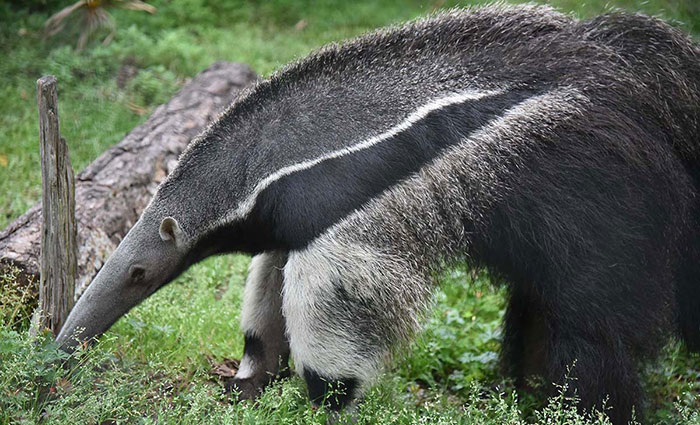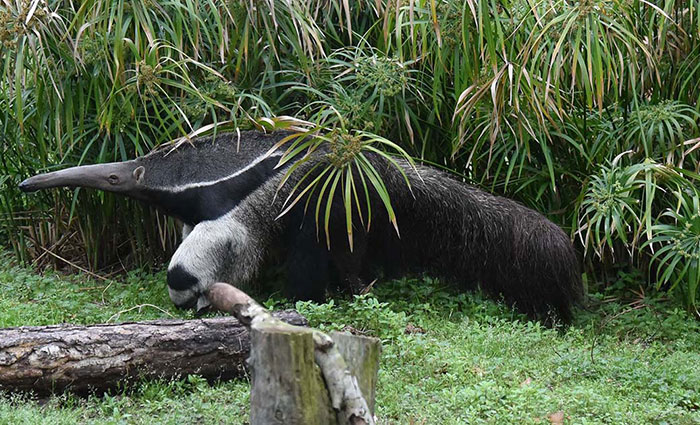New Year, New Species: Giant Anteaters
Join the Mix
A rare new species makes its debut this week over in the South American Aviary, and you won't be able to miss it. Two giant anteaters, Demetrio and Alice, made their debut this morning, just in time to ring in the New Year.
While there are 3 species of anteater in the world (tamandua, silky and giant) as the name suggests, Giant anteaters are the largest. Weighing 75-100 pounds the new giant anteaters are about the size of golden retrievers, but their thick, bushy hair makes them both look even larger.
Everything about the Giant anteater is extraordinary, but the first thing you might notice is the elongated head and nose, tiny ears and very small eyes. All these features make them perfectly suited to get in and out of a termite mound or anthill.
Giant anteaters walk with a slow shuffle on all four legs with their nose pointed to the ground. They don’t walk on their feet; instead, with the claws curled up into the feet, anteaters walk on their "fists." If you watch them closely enough, you’ll be able to see that the giant anteater has the longest tongue in relation to its body size of any mammal, about 2 feet long and is shaped like a strand of spaghetti.
This amazing tongue has teeny, backward-pointing spines covered in sticky saliva that aid in feeding on, well ants! It uses its keen sense of smell (40x better than humans!) to detect ant and termite mounds and then sticks its tongue inside picking up the insects with that sticky tongue.
At the Gulf Breeze Zoo, the new giant anteaters are offered a specialty insectivore “smoothie,” which gives them the same nutrients they would get in the wild.
Giant anteaters are not endangered yet, but they are disappearing rapidly due to habitat loss, caused by fires, hunting, and being hit in the road while crossing territories. It is estimated that only 5,000 giant anteaters are left in the wild, while less than 100 individuals live in zoos in the US.
Giant Anteaters, Demetrio and Alice can be seen daily in the South American Aviary and also in Anteater exhibit by the King Vulture Aviary, weather dependent.


